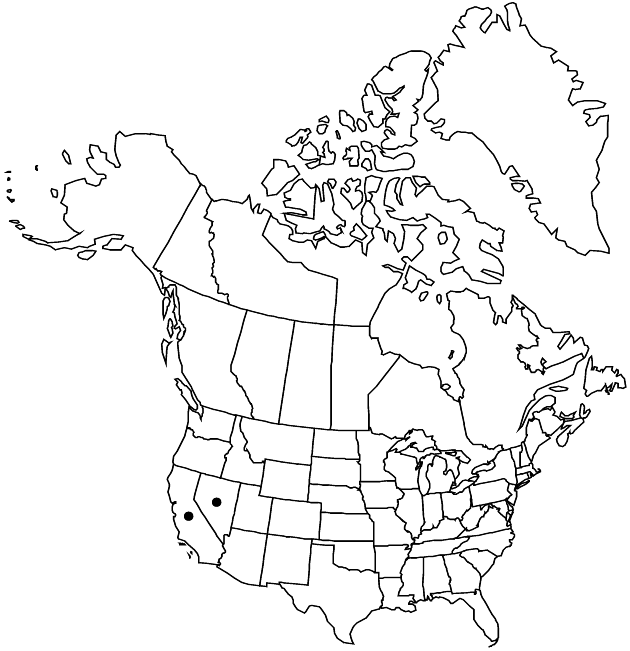Difference between revisions of "Bahiopsis reticulata"
Bot. J. Linn. Soc. 140: 72. 2002.
Common names: Death Valley goldeneye
Endemic
Basionym: Viguiera reticulata S. Watson Amer. Naturalist 7: 301. 1873
FNA>Volume Importer |
imported>Volume Importer |
||
| (5 intermediate revisions by 2 users not shown) | |||
| Line 8: | Line 8: | ||
}} | }} | ||
|common_names=Death Valley goldeneye | |common_names=Death Valley goldeneye | ||
| − | |basionyms={{Treatment/ID/ | + | |special_status={{Treatment/ID/Special_status |
| + | |code=E | ||
| + | |label=Endemic | ||
| + | }} | ||
| + | |basionyms={{Treatment/ID/Basionym | ||
|name=Viguiera reticulata | |name=Viguiera reticulata | ||
|authority=S. Watson | |authority=S. Watson | ||
| + | |rank=species | ||
| + | |publication_title=Amer. Naturalist | ||
| + | |publication_place=7: 301. 1873 | ||
}} | }} | ||
|synonyms= | |synonyms= | ||
| Line 35: | Line 42: | ||
-->{{#Taxon: | -->{{#Taxon: | ||
name=Bahiopsis reticulata | name=Bahiopsis reticulata | ||
| − | |||
|authority=(S. Watson) E. E. Schilling & Panero | |authority=(S. Watson) E. E. Schilling & Panero | ||
|rank=species | |rank=species | ||
| Line 49: | Line 55: | ||
|publication title=Bot. J. Linn. Soc. | |publication title=Bot. J. Linn. Soc. | ||
|publication year=2002 | |publication year=2002 | ||
| − | |special status= | + | |special status=Endemic |
| − | |source xml=https:// | + | |source xml=https://bitbucket.org/aafc-mbb/fna-data-curation/src/2e0870ddd59836b60bcf96646a41e87ea5a5943a/coarse_grained_fna_xml/V19-20-21/V21_430.xml |
|tribe=Asteraceae tribe Heliantheae | |tribe=Asteraceae tribe Heliantheae | ||
|subtribe=Asteraceae (tribe Heliantheae) subtribe Helianthinae | |subtribe=Asteraceae (tribe Heliantheae) subtribe Helianthinae | ||
Latest revision as of 20:12, 5 November 2020
Shrubs, 50–150 cm. Leaves alternate or opposite; petioles 3.5–30 mm; blades broadly ovate, 2.8–9 × 2.3–6.5 cm, margins entire, faces: abaxial sericeous and gland-dotted (and strongly reticulate, not shiny), adaxial sericeous (hair bases slightly enlarged). Heads 3–9(–25). Peduncles 0.5–5 cm. Involucres campanulate to hemispheric, 10–15 × 6–9 mm. Phyllaries 18–25, 2.5–5 × 1.2–2 mm. Paleae oblanceolate, 4–8 mm. Ray florets 8–15; laminae 7–15 mm. Disc florets 40+; corollas 3–5.5 mm. Cypselae 2.5–4 mm; pappi of 2 lacerate, aristate scales 1.5–2.8 mm and 2–6 lacerate scales 0.6–1 mm. 2n = 36.
Phenology: Flowering Mar–Jun.
Habitat: Xeric scrub, desert grottoes and canyons
Elevation: 600–1400 m
Discussion
Selected References
None.
Lower Taxa
None.
